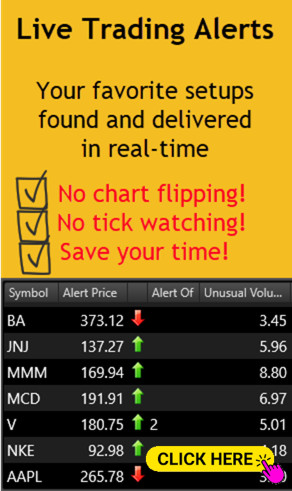T-Line trading is a flexible, reliable investing technique that will benefit most swing traders. I coined the term “T-Line” back when I was working as a moderator in a trading room in 2004. The T-Line is simply defined as the 8-day exponential moving average, or the 8 EMA. Of course, I am not the first person to use the 8 EMA. I simply coined the term “T-Line” and came up with a trading plan that uses the 8 EMA as support (where there is buying pressure) and resistance (where there is selling pressure). Read on to learn more about this innovative strategy.
Background
Traders use many different moving averages as support and resistance. Some of the most commonly used moving averages are the 10-day simple moving average (10 SMA), the 20 SMA, the 50 SMA, and the 200 SMA, but there are many others (21 EMA, 34 EMA, 72 EMA, 100 SMA, to name a few). Moving averages are lagging indicators, or technical indicators that trail the price action of an asset (which is kind of like a train laying down its own tracks). I personally use the T-Line, 20 SMA, 34 EMA, 50 SMA, and the 200 SMA. I encourage you to only use indicators that you use for your trading.
The Birth of T-Line Trading
So how did I first identify and use the T-Line? Well, after a long stretch of poor trading decisions and a decidedly losing strategy, I knew that I had to change something. That’s when I noticed that the T-Line connected the lows of a given time frame in an uptrend as well as the highs in a downtrend. I also realized that it acted as a trigger line or a trade line for entries and exits of a trade. After plotting the T-Line on my charts, I noticed that if a long stock closes above the T-Line, there was a high probability of a continued rise . The same is true in a downtrend—if a stock closes below the T-Line and remains below the T-Line, it will continue in the current downtrend. Thus, the T-Line was born!
Using T-Line Trading
The T-Line can be applied to all trading plans and investment strategies, and it operates in all time frames. I have found that it works best when trading the slower time frames (like the daily, weekly, and monthly charts) for the longer-term trader. The T-Line can work on 15-minute, 30-minute, and 60-minute charts as well (especially for the wing trader on the Daily), but it is not as reliable on the 1- or 5-minute charts.
Keeping all that in mind, T-Line trading is most beneficial to the swing trader. Long-term investors can use the T-Line, but investors typically aren’t getting in and out of trades as the price action goes up and down within a trend.
Take the Reins
Wondering how T-Line trading will work with your investment strategies? Set the T-Line up on your charts and watch for yourself. Also, remember this basic rule: if you are in a long position, you want the price to close above the T-Line to stay in the trade. The opposite is true with short trading—you want to stay short if the stock closes below the T-Line.
Pretty simple, right? Give T-Line trading a try! It just might change the way you think about investing.




